Scientists Delve Into The Life and Death of The ‘Screaming Mummy’
In 1935, archaeologists unearthed the mummified remains of an ancient Egyptian woman whose mouth was frozen in an eternal scream.
Discovered in a tomb near Luxor, this “screaming woman” has continued to intrigue researchers.
Mysterious Expression
Recently, a new team of scientists employed CT scans and advanced imaging techniques to delve deeper into the mummy’s physical condition, health, and preservation.

Source: Sahar Saleem/ Frontiers
Their goal was to uncover what might have caused her dramatic facial expression.
Study Reveals Age and Embalming Details
Published in Frontiers in Medicine on Friday, their findings indicate that the woman was 48 years old at the time of her death, determined through an analysis of pelvic bones that change with age. The study highlighted unique aspects of her mummification process.
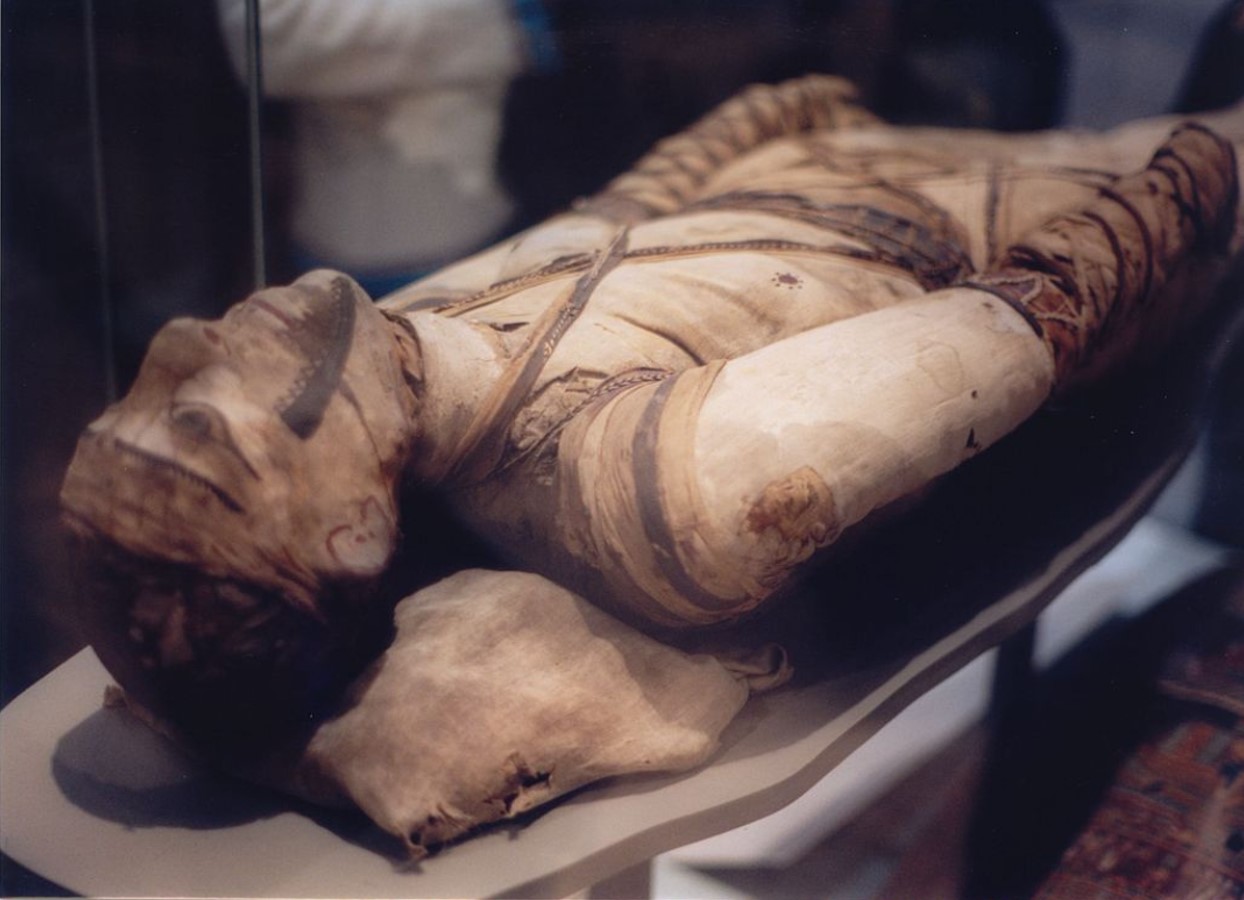
Source: Wikipedia
According to Sahar Saleem, a professor of radiology at Kasr Al Ainy Hospital, Cairo University, her body was embalmed using costly frankincense and juniper resin, substances traded from distant regions.
Unusual Mummification Revealed
Saleem also noted the absence of incisions, aligning with initial observations that her brain, diaphragm, heart, lungs, liver, spleen, kidneys, and intestines were intact.

Source: Wikimedia Commons
The study found that the classic mummification method of that era typically involved removing internal organs, except for the heart. However, this was not the case with this mummy.
Unknown Cause of Death
The woman was about 1.54 meters (over 5 feet) tall and showed signs of mild arthritis in her spine, including bone spurs on some vertebrae. Several teeth, presumably lost before her death, were also missing.
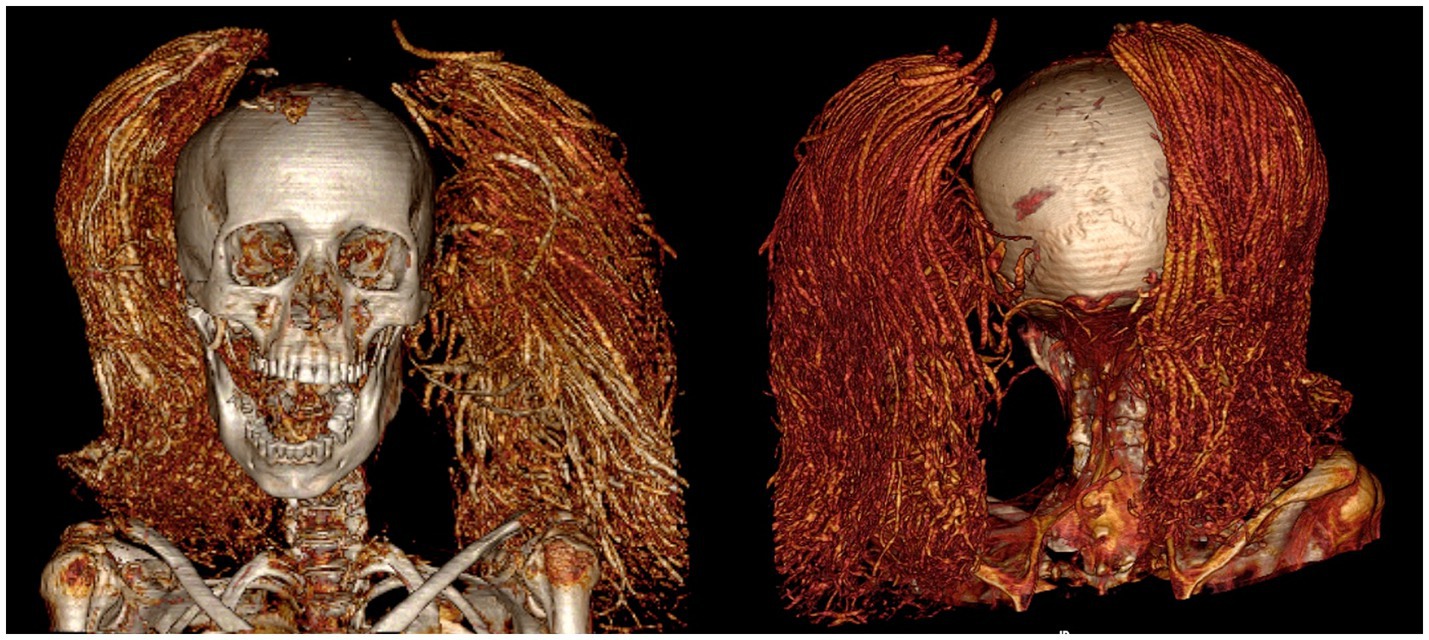
Source: Sahar Saleem/ Frontiers
The exact cause of death remained undetermined. Saleem commented, “Here we show that she was embalmed with costly, imported embalming material,” adding that this, along with the mummy’s well-preserved state, challenges the conventional belief that the failure to remove her inner organs indicated poor mummification.
Rare Open-Mouth Mummy
Only a few ancient Egyptian mummies are known to have their mouths open, as embalmers typically secured the jawbone and skull to keep the mouth closed.

Source: Wikipedia
The study could not definitively explain her haunting expression, but researchers proposed a grim theory.
“Screaming” Expression Likely Due to Violent Death
Saleem suggested that the mummy’s excellent preservation, the rarity and expense of the embalming materials, and additional funerary practices like a wig made from date palm and rings on the body, imply that her mouth was not left open due to negligence.
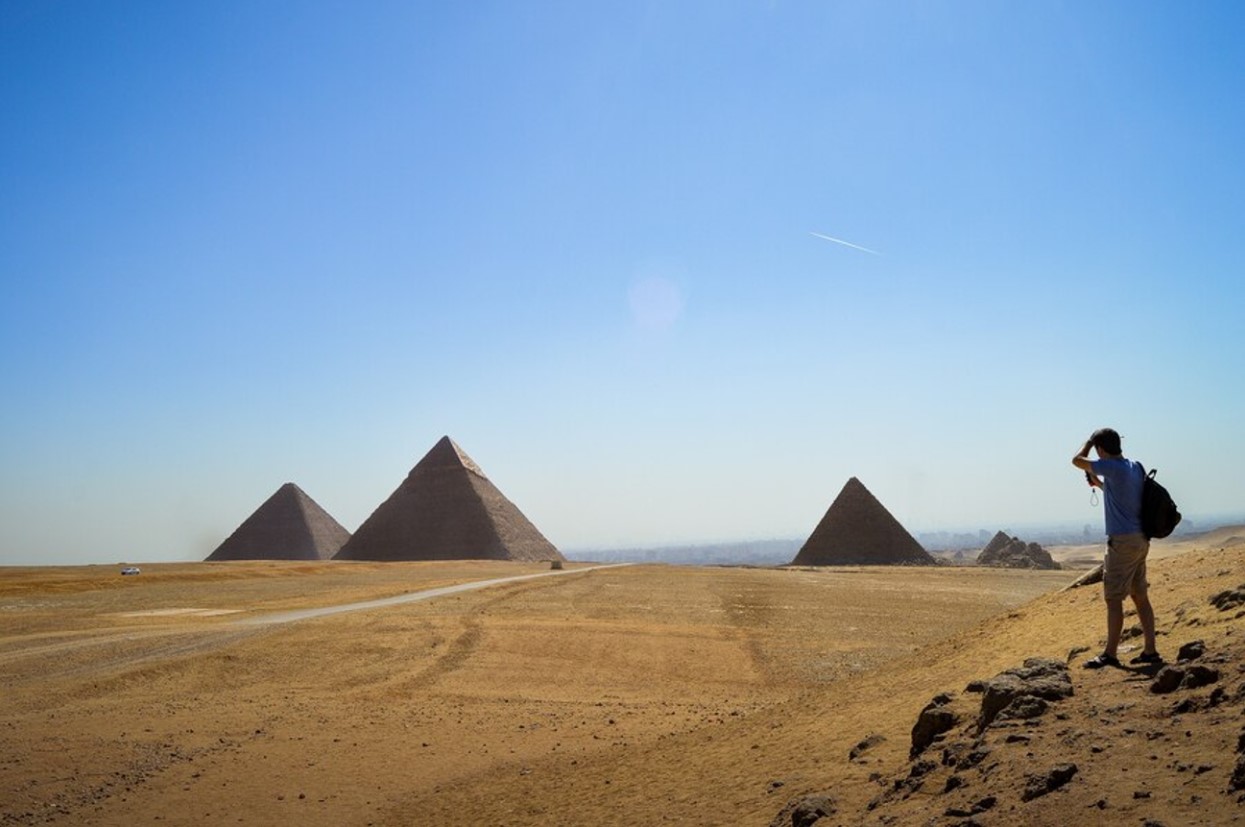
Source: Freepik
Instead, her “screaming facial expression” might be a cadaveric spasm—a rare muscular reaction linked to violent deaths—suggesting she could have died in extreme agony or pain.
How Factors Affect a Mummy's Facial Expression
The researchers speculated that she might have been mummified within 18 to 36 hours after death, preserving her open-mouth position.

Source: Wikimedia
However, the study also pointed out that a mummy’s facial expression does not necessarily reflect the deceased’s final moments. Factors such as decomposition, drying rates, and the pressure of the wrappings could all influence a mummy’s expression.
Unresolved Mystery Behind the Mummy's Open Mouth
“Burial procedures or post-mortem alterations might have contributed to the phenomena of mummies with screaming appearances,” the study authors wrote.

Source: Wikimedia
Saleem emphasized that the true cause or circumstances of the woman’s death remain unknown, leaving the cause of her open mouth unresolved.
Burial Beneath Senmut’s Tomb
The “screaming woman” was buried beneath the tomb of Senmut, an architect for Queen Hatschepsut (1479–1458 BC) who held significant roles during her reign. The study suggests that the woman may have been related to Senmut.

Source: Wikimedia
Her remains were discovered during a Metropolitan Museum of Art expedition and her coffin is currently on display there, while her mummified body is kept at the Cairo Egyptian Museum.
Previous Studies
Saleem previously examined two other mummies with open mouths.
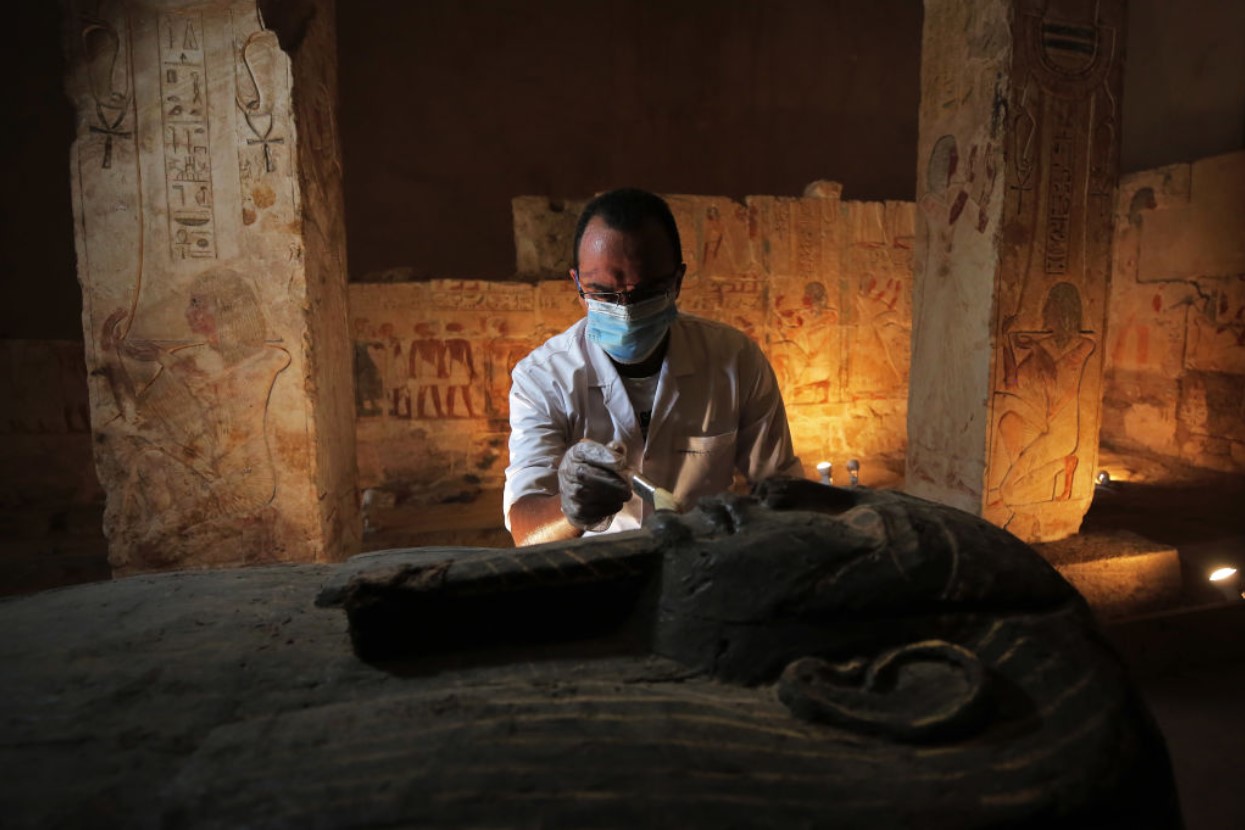
Source: Fadel Dawod/Getty Images
One, thought to be Prince Pentawere, had his throat slit for participating in the assassination of his father, Ramesses III (1185-1153 BC). The mummy was poorly embalmed, indicating a careless process. The second, Princess Meritamun, who died of a heart attack, had an open mouth likely due to postmortem jaw contraction.
Expert Endorsement
Randall Thompson, a cardiologist at the University of Missouri–Kansas City, praised the study for its detail and insight. He supported the authors’ explanation for the open mouth, noting that their research sheds light on ancient embalming practices and provides valuable information on health and disease in antiquity.
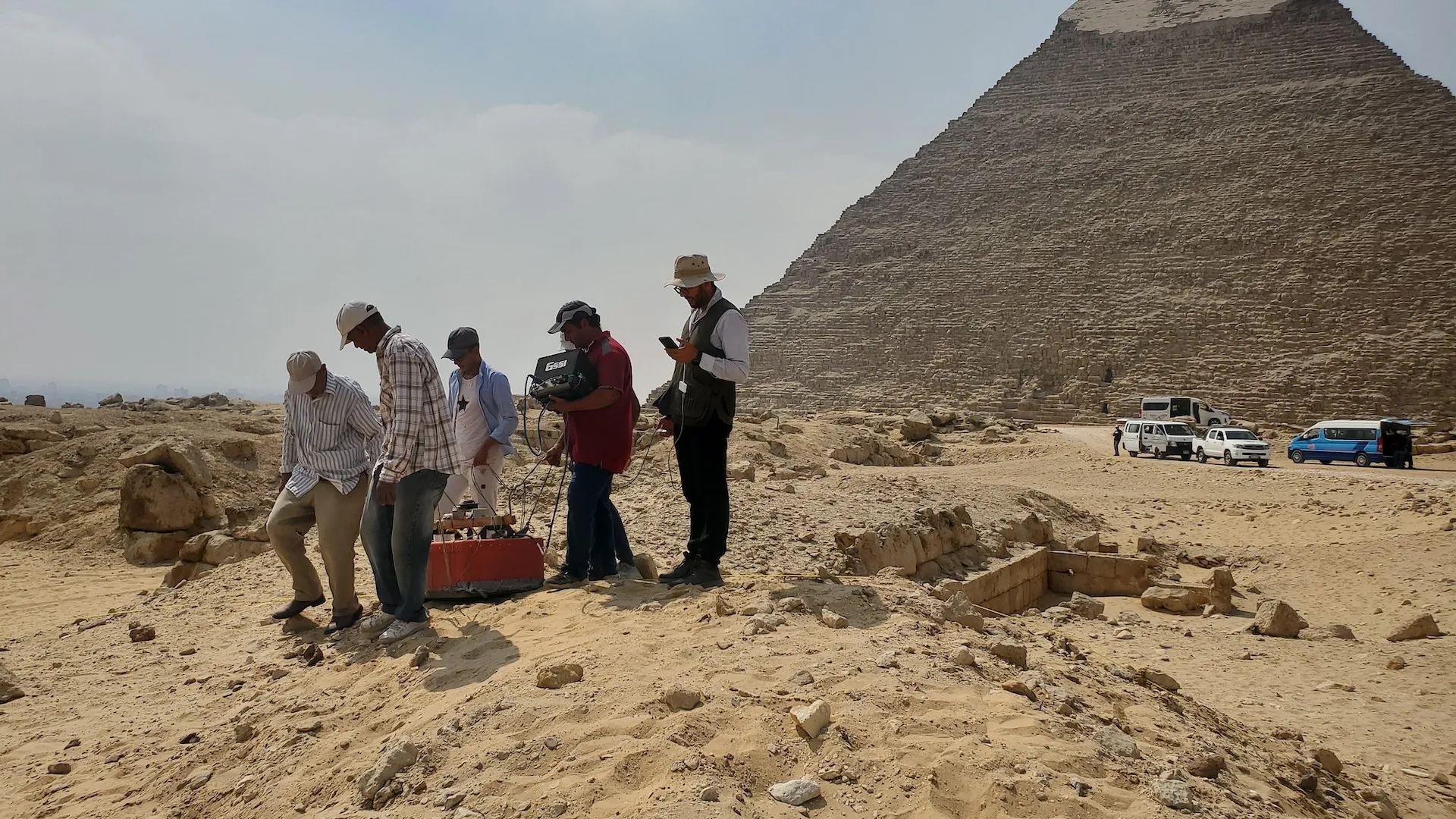
Source: Motoyuki Sato
“More broadly, we can learn much about health and disease from the study of ancient mummies,” Thompson observed, noting that heart disease predates many earlier beliefs.
